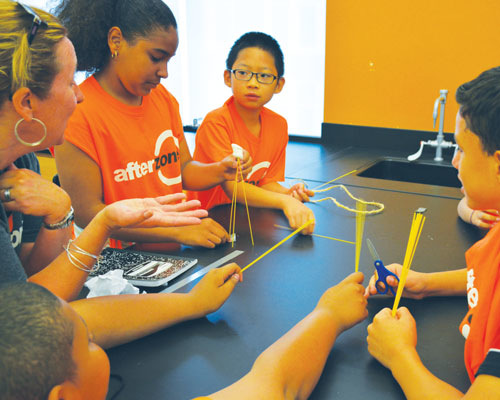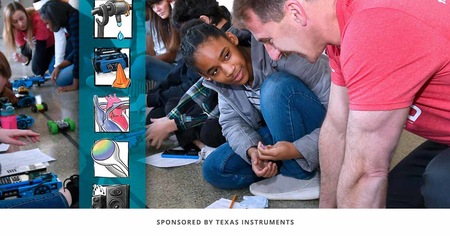"I hate math" is a common refrain for both adults and young people. Math anxiety is well-documented. A great deal of STEM content is quantitative, so this anxiety also carries over to the other areas of STEM.
People are not born with STEM anxiety. Like most fears, STEM anxiety is something we learn. Many psychological, social and economic factors influence young peoples' engagement in STEM. Generally, engagement in specific subjects has more to do with perception than ability. How is the subject positioned? Is a topic perceived as being hard or something that's only for nerds?
Afterschool programs can play a huge role in helping young people overcome STEM anxiety. The bulk of afterschool programs cover the key ages where STEM anxiety develops. By the time students reach fourth grade, a third of them have lost interest in science. Almost 50 percent of kids have lost interest in STEM or have deemed it irrelevant to their future plans by eighth grade. Positive presentation and collaborative activities can help reduce or even reverse STEM anxiety. Here are five simple practices educators can use to address STEM anxiety.
ENTHUSIASM
Role-model excitement and present a positive STEM attitude. Make sure to address any STEM anxiety you may have. The childhood STEM education of many afterschool professionals consisted of formulas, intimidating equipment, tricky experiments and the need to memorize complicated content. These are the ghosts of STEM past, and in no way should they color the inquiry-based STEM education of today. Not being a STEM expert can actually make one the perfect role model for positive STEM experiences. Not having all of the answers but exhibiting genuine excitement about finding these answers creates the perfect atmosphere for collaborative inquiry.
HANDS-ON EVENTS
Create interest and inspiration by using novelty and surprise. Young people need something to shake up their day—a challenge to get them thinking. From science "magic tricks" to unexpected results, there are hundreds of simple hands-on STEM experiences that challenge perceptions and inspire creative thinking. Try to use a range of varying stimuli to prompt interest, inquiry and collaboration. Create learning-based ownership by facilitating experiences that encourage young people to formulate their own questions, and design experiments to discover the answers.
REAL-WORLD CONNECTIONS
When facilitating STEM experiences, help young people make connections to the real world. Promote discussion and establish context by exploring any prior knowledge the group may have. Encourage real-world applications for new content. For example: If experimenting with forces, evaluate the learning by asking the group how they would ship a cellphone to a friend. What forces might protect it as it goes through the mail? Young people will more readily engage in STEM subjects when they can identify relevance to their lives.
EMOTIONAL CONNECTIONS
Many times, STEM is presented as the domain of geniuses—and that can be hard for young people to relate to. STEM discoveries do not necessarily happen overnight. Most discoveries only came about through perseverance and struggle. Edison had to make hundreds of light bulbs before he found a filament that would work. Sir Isaac Newton only became a scientist because he was a lazy farmer. After Newton fell asleep and lost a herd of sheep, his family sent him to university so he would not do anymore damage to their farm. To help connect STEM subjects to a young person's sense of self, use stories and history to provide context and connections to how these discoveries were made.
VALUE OF STEM
STEM jobs are no longer confined to pure research. The traditional view of an old, bald, white man alone in his laboratory is no longer a reality. Today, STEM jobs cover video games to building robots. STEM careers can be collaborative, creative and fun. During STEM experiences, discuss what value STEM has in relation to young people's future. Have them think about the careers that relate to the content. Provide examples of the variety of STEM careers.
Contributed by Andy the Science Wiz, NAA STEM Specialist Andy Allan.




